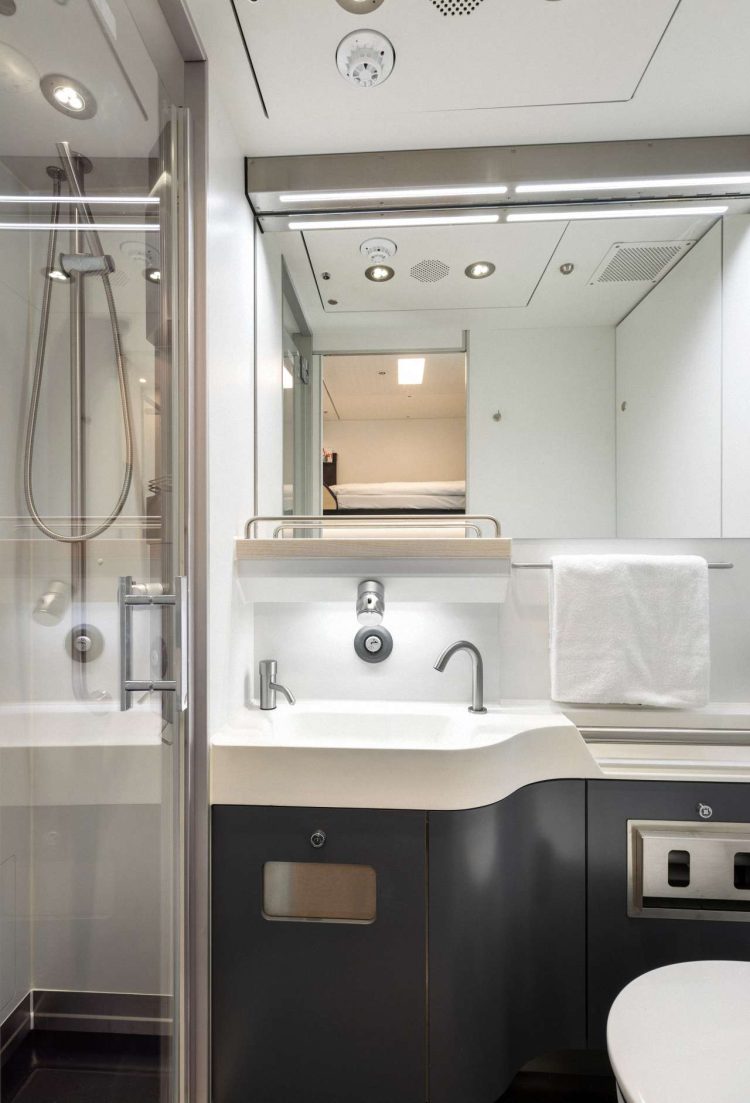At a press conference today (Wednesday 23 August), ÖBB (Austrian Federal Railways) announced its new agreement with Siemens Mobility to digitise the country’s rail network.
The operator aims to double the capacity of the country’s rail system by 2040, in order to accommodate rising passenger numbers and improve its level of service. Its work with Siemens will help it to achieve this goal.

Infrastruktur AG has now commissioned the European Train Control System (ETCS) on the 57km route between Linz and Vöcklabruck. ETCS is a modern, digital signalling system that controls distances between trains, and their direction and speed, in real time, enabling the route to carry more passengers and freight. It also ensures that train services are more reliable, punctual and safe.
The press conference, held in Linz, saw the two parties present their framework agreement for a long-term cooperation. The agreement covers the expansion of the ETCS Level 2 system throughout Austria‘s high-level rail network.
It also includes the establishment of ETCS Radio Block Centres (RBCs) and their maintenance and servicing. Twenty-one RBCs will be installed by 2038, providing fail-safe coverage for Austria’s high-level rail network.

ETCS Level 2 began operating on the Linz–Wels–Vöcklabruck and Wels–Haiding line sections at the beginning of this month. It is the first commission based on the new framework agreement. Trains running on this route are digitally monitored and controlled in Linzhe, and the ETCS Radio Block Centre covering this section is located in Vienna.
ETCS Level 2 involves data being transmitted from the ETCS Radio Block Centre to trains via GSM-R (Global System for Mobile Communications – Railway) train radio. Data balises (electronic beacons or transponders placed between the rails) determine a train’s position and relay route data. The corresponding interlocking transmits track vacancy data and other information to the RBC, which uses it to generate the driving permit which it sends to the train. Data flows continuously in both directions, which considerably increases the line throughput, enabling trains to be driven with ‘electronic vision’ through several track blocks, which allows shorter headways at maximum speeds, so that more passengers and freight can be transported in a shorter time.
In this way, ETCS provides the basis for autonomous driving at optimum speed, which saves energy and protects the environment. Without ETCS, trains have to operate at a considerable distance from each other because of their long braking distances. Railway lines equipped with ETCS, such as the Vienna–Breclav, Vienna–St. Pölten or Kufstein–Brenner routes have shown these benefits in action.
ETCS is the standard system throughout Europe, so will travel across national borders much easier, more comfortable and shorter.
ÖBB-Infrastruktur AG is to spend two hundred million euros on ETCS by 2026, with nine hundred millions euros allocated to the framework agreement for ETCS and train controls.
The framework agreement is the use of the DS3 (Distributed Smart Safe System) platform, which has been used successfully since November 2020 in a pilot project for the interlocking at Achau station in Lower Austria. DS3 is Siemens Mobility’s new software platform for safety-relevant logic, and migrates existing applications such as ETCS or interlockings to a standard high-performance platform based on COTS (commercial off-the-shelf), which uses multicore technology to create a fully IP-based system architecture.
Along with the coupling computer already running on the DS3 platform, which links to the interlockings, the ÖBB and Siemens Mobility partnership will also employ DS3 in all of the RBCs. DS3 will enable ETCS control centres to be further optimized and given greater flexibility, which helps ÖBB to achieve significantly higher cost-effectiveness through lower investment and maintenance costs.
The two organisations have worked together on other projects, including the Nightjet sleeper trains.

Dipl.-Ing. Dr. Johann Pluy, CEO of ÖBB-Infrastruktur AG, said, “Efficient railway infrastructure is critically important for achieving Austria’s climate goals. To help us handle the expected increase in rail traffic and shift away from roads, we are relying extensively on digital initiatives, and ETCS Level 2 is an enormously important component for railways of the future. The framework agreement signed with Siemens Mobility is based on a Europe-wide tender and we’re looking forward now to working with the best bidder to equip further rail routes with Level 2.”
Andre Rodenbeck, CEO Rail Infrastructure at Siemens Mobility, added, “We are proud to be working with ÖBB to equip the Austrian rail network with ETCS Level 2, and the commissioning of this route marks an important milestone in ÖBB’s continuing expansion of ETCS coverage. The use of ETCS Radio Block Centres and our innovative software-based DS3 safety platform will significantly increase route capacity and make the Austrian railway system one of the most modern in the world.”






Responses